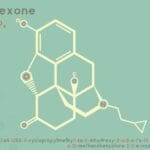By Cristina Utti MFA, MA
Eye Movement Desensitization and Reprocessing (EMDR) was developed by psychologist Francine Shapiro as a treatment for trauma. Her research and practice of EMDR won her the International Sigmund Freud Award for Distinguished Contribution to Psychotherapy by the City of Vienna and the World Council, the Distinguished Scientific Achievement in Psychology Award by the California Psychology Council, and the Award for Outstanding Contributions to Practice in Trauma Psychology by the American Psychological Association Trauma Division.
EMDR is a non-invasive, evidence-based method of psychotherapy that uses adaptive information to process memories in the brain. It is primarily used for someone who has undergone a trauma and is effective for recovery from:
- Individuals with PTSD: EMDR is particularly effective in treating individuals with PTSD, whether the trauma is related to combat, physical or sexual assault, accidents, or any other traumatic event.
- Survivors of trauma: People who have experienced any form of trauma, such as childhood abuse, domestic violence, natural disasters, or emotional trauma, can benefit from EMDR to process and heal from their traumatic experiences.
- Individuals with anxiety disorders: EMDR can be helpful for those struggling with various anxiety disorders, including generalized anxiety disorder (GAD), social anxiety disorder, and specific phobias. It can help reduce the emotional distress associated with anxiety and its triggers.
- Individuals with depression: EMDR can be used as part of a comprehensive treatment plan for individuals with depression, especially when depression is related to unresolved trauma or negative life experiences.
- Individuals recovering from Addiction: People recovering from addiction, especially when addiction is linked to trauma or emotional triggers, can benefit from EMDR to address the underlying issues and reduce the risk of relapse.
People often turn to drugs and/or alcohol as a way of self-medicating physical or emotional pain. When someone is upset or uses substances, brain patterns are altered. With the use of EMDR therapy, the person remembers what happened but processes it differently. It is not a quick fix for addiction. It incorporates eight phases of treatment.
Phases of EMDR Treatment
Phase 1: History and Treatment Plan
The first few sessions are used for discussing with the client what has brought them into therapy, the symptoms, and the behaviors stemming from the symptoms. The client does not have to go into specific details for EMDR to be helpful.
Phase 2: Preparation
This phase is usually two to four sessions. The therapist takes this time to get to know the client and build a relationship of trust. Some basic techniques are taught at this time.
Phase 3: Assessment
In this phase the therapist assesses specific thought patterns to be reprocessed. The client will identify negative thoughts about the painful event and then identify the physical sensation that goes with the negative thought. The therapist then works with the client to reprocess these feelings through eye movements, taps, or tones.
Phase 4: Desensitization
This phase focuses on the client’s disturbing emotions as related to the Subjective Unit of Disturbance Scale. The client is guided through eye movements until the emotions associated with the event are less disturbing (below “two” on the scale). This is the core phase of EMDR therapy. The therapist guides the client in processing the targeted memories or experiences by using bilateral stimulation. This stimulation can be achieved through the client’s eye movements (following the therapist’s finger or using a light bar), tactile sensations (tapping), or auditory cues (headphones with alternating sounds). During this phase, the client is encouraged to allow whatever thoughts, emotions, and sensations arise to come and go without judgment.
Phase 5: Installation
This phase concentrates on increasing the positive thoughts that the client has identified to replace the negative beliefs. In this phase, the therapist helps the client replace negative beliefs or self-perceptions related to the traumatic memories with more positive and adaptive beliefs. This process involves reinforcing the client’s self-esteem and self-worth.
Phase 6: Body Scan
Once the positive thought/belief has been strengthened, the therapist will see if there is any tension left in the body. EMDR evaluations look for physical responses to unresolved issues. The session is not considered successful until the client can recall the original painful thought without feeling any bodily tensions. After the negative beliefs associated with the targeted memory have been reprocessed, the therapist and client conduct a body scan to identify and release any remaining physical tension or distress related to the memory.
Phase 7: Closure
Closure is done at the end of every session and should leave the client feeling better than when the session began. After working through all six previous phases, the client will have learned several self-calming techniques and will have journaled the effectiveness of them for further reference.
Phase 8: Reevaluation
In subsequent sessions, the therapist and client review progress and determine if additional processing is needed for other traumatic memories or if any new issues have emerged. The treatment plan may be adjusted accordingly.
Benefits of EMDR in Addiction Treatment
While it is not a standalone treatment for addiction, EMDR can be a valuable component in addiction treatment for several reasons:
Trauma resolution: Many individuals with addiction issues have experienced trauma, which can be a root cause or a contributing factor to their substance abuse. EMDR helps individuals process and resolve trauma, reducing the emotional distress and triggers that may lead to addiction.
Improved self-esteem and self-worth: EMDR can help individuals rebuild their self-esteem and self-worth, which may have been eroded by addiction. As individuals work through past traumas and negative beliefs, they can develop a more positive self-image, which is essential for recovery.
Addressing co-occurring mental health issues: Many individuals with addiction have co-occurring mental health issues, such as depression, anxiety, or post-traumatic stress disorder. EMDR can be effective in treating these co-occurring conditions, making addiction treatment more comprehensive.
EMDR Goals in Addiction Treatment
EMDR is an evidence-based therapy that has been shown to be effective in treating post-traumatic stress disorder (PTSD) and other trauma-related conditions. The goal of EMDR is to help individuals process and integrate their traumatic experiences so that they no longer cause significant distress or interfere with their daily functioning. As we can see, EMDR is a process. The benefit of EDMR in addiction recovery is that it has been proven to reprocess thoughts and behavior patterns that lead to substance abuse. Addiction did not occur overnight, and one should not think there is a “magic pill” for recovery. Using EMDR in conjunction with other therapies, meetings, and twelve-step programs helps to reprocess thought patterns, therefore reducing the risk of relapse.
Reference:










